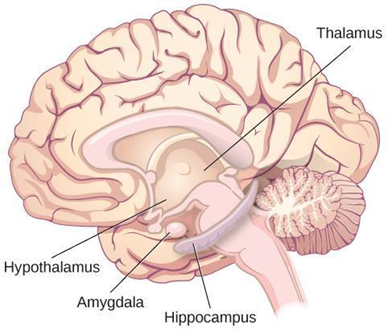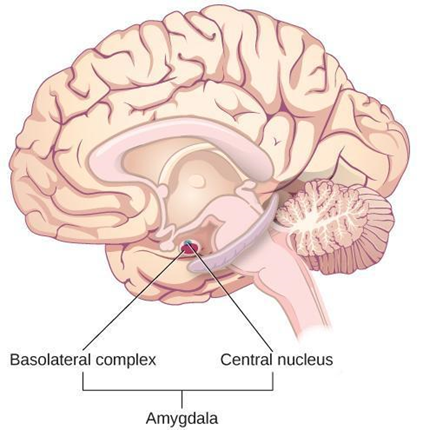15.3: The Biology of Emotions
- Page ID
- 140943
Diving into the Underlying Biology of Emotional Development
The limbic system, which is the area of the brain involved in emotion and memory Figure \(\PageIndex{1}\)), includes the hypothalamus, thalamus, amygdala, and hippocampus. The hypothalamus activates the sympathetic nervous system of any emotional reaction. The thalamus serves as a sensory relay center whose neurons project to the amygdala and the higher cortical regions for further processing. The amygdala plays a role in processing emotional information (Fossati, 2012). The hippocampus is the area that integrates emotional experience with cognition (Femenía, Gómez-Galán, Lindskog, & Magara, 2012)[1].

Amygdala
The amygdala has received a great deal of attention from researchers in understanding the biological basis for emotions, especially fear and anxiety (Blackford & Pine, 2012; Goosens & Maren, 2002; Maren, Phan, & Liberzon, 2013).

Hippocampus
The hippocampus is also involved in emotional processing. Like the amygdala, research demonstrates that hippocampal structure and function are linked to a variety of mood and anxiety disorders.[1]
[1]Emotion and Motivation is shared under a CC BY 4.0 license and was authored, remixed, and/or curated by OpenStax

